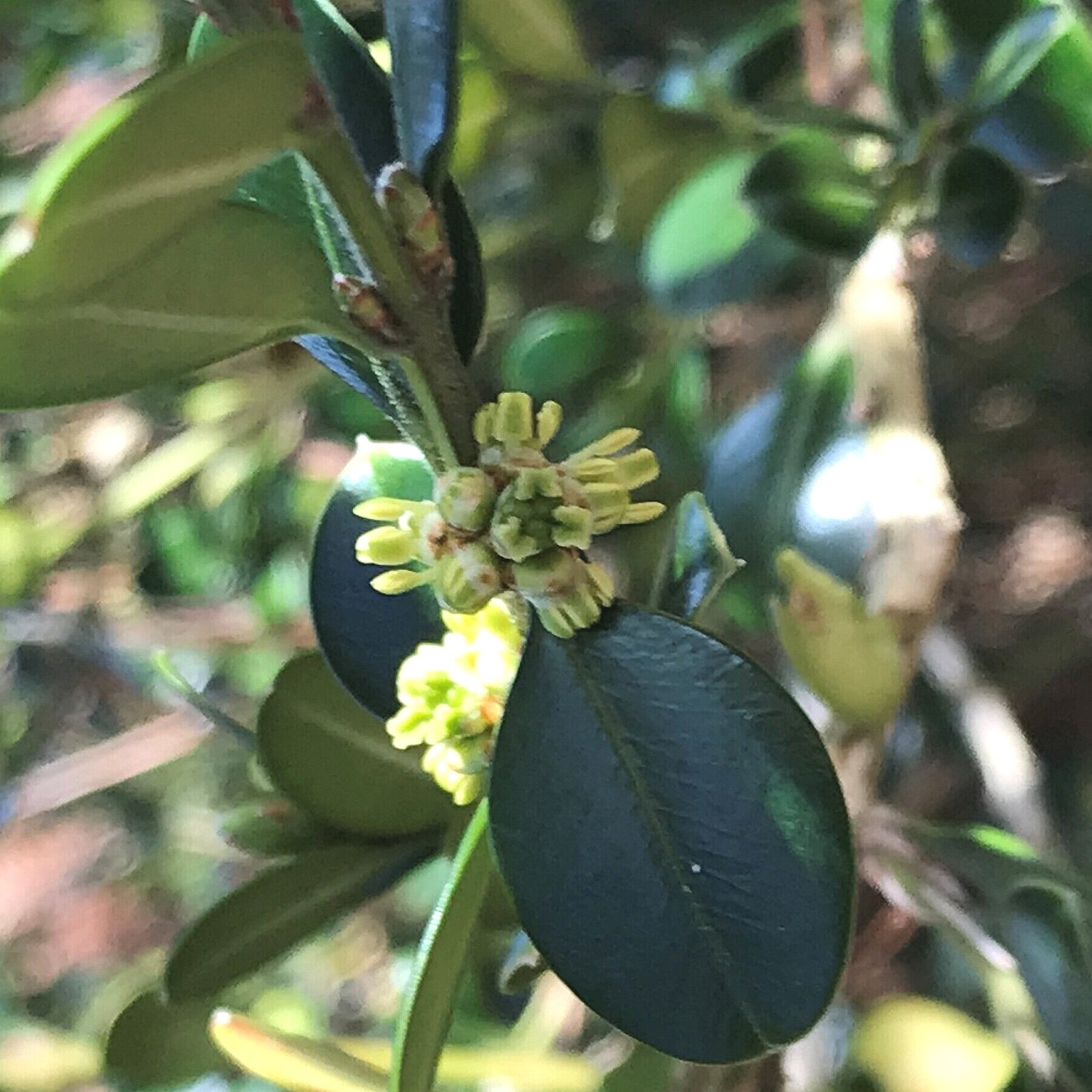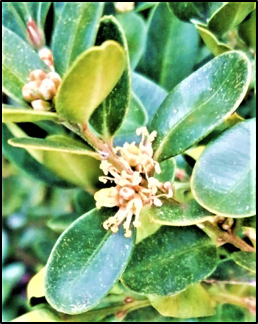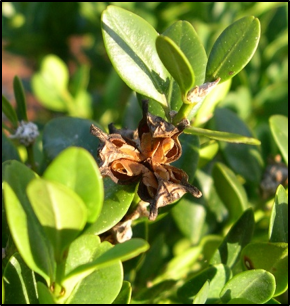By: Keith Yoder, Professor Emeritus of Plant Pathology, Virginia Tech
Boxwood flower buds.
Figure 1. Dormant boxwood flowers. Note terminal buds, right, and axillary buds, center left
Boxwood typically blooms in February and March in central Virginia. The dormant flowers appear generally globular (Figure 1), but are actually flower clusters composed of a single female (pistillate) flower tightly surrounded by as many as six male (staminate) flowers. They are arranged along shoots as axillary clusters or at the shoot tip as terminal clusters.
With warming temperatures in late winter, swelling buds signal the onset of flowering. The female flower has 4 to 7 or more sepals at its base and a single three-celled ovary topped with three short styles with two-lobed stigmas (Figure 2). The ovary has three locules, each with two ovules. Each ovule is capable of developing into a seed, potentially yielding six seeds per flower. The male flowers have four sepals arranged as two opposite pairs and four stamens, each opposing a sepal, composed of a thick filament topped by a two-celled anther.
Figure 2. Emerging pistils of female flowers.
Figure 3. Developing anthers of male flowers.
As the flowers develop in the spring, the tips of the three pistils begin to protrude from the central female flower bud (Figure 2), and they expand further into the two-lobed stigmas where the pollen is received. Meanwhile, yellowish-green anthers emerge from the male flowers (Figure 3). The initially plump two-celled anthers begin to split (dehisce) longitudinally and shed pollen (Figure 4), which is deposited on the exposed stigmas. The inconspicuous flowers lack petals and, when viewed from some distance, much of the observed color is due to the appearance of the anthers on a heavily-blooming plant.
Figure 4. Male flower anthers shedding pollen.
Figure 5. Developing fertilized female flower. (Male flowers had been removed to prevent self-pollination for controlled breeding purposes).
After pollination, the fertilized ovaries begin to expand and develop three distinct horns on the immature green capsules (Figure 5). After they mature in mid-summer, the capsules split longitudinally (Figure 6) and open suddenly to forcibly discharge the shiny black seeds (Figure 7).
Figure 6. Capsule from which seeds have been discharged.
Figure 7. Seed capsule with discharged seed.
The above descriptions of the flowers and flowering process are ‘typical’, but there are some exceptions in structure and development. For example, we have observed ‘National’ with only female flowers in the American Boxwood Society Memorial Garden, State Arboretum of Virginia, Blandy Experimental Farm, Boyce VA. The time of development may vary without explanation. After seeing flowers with anthers of an unidentified variety open in Winchester VA in early December 2019, we scouted the plantings at Blandy and found ‘Miss Jones’ and ’Tall Boy’ also with anthers exposed. One would not expect flowers pollinated in December to develop through mid-winter.
References:
Batdorf, L. R. 2004. Boxwood; an Illustrated Encyclopedia. The American Boxwood Society, Boyce VA. 343 pp.
Batdorf, L. R. 2005. Boxwood Handbook, A Practical Guide, 3rd Edition. The American Boxwood Society. Boyce VA. 123 pp.
These publications are available at: https://boxwoodsociety.org/abs_publications.html








